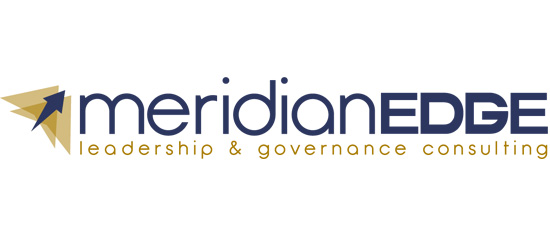The Policy Governance And Dialogue Interconnection
A very important element of the success of Policy Governance is the dialogue that can be created by following the principles. Good governance is about translating values into results, and to be able to have a meaningful conversation about values, we need to engage in dialogue. But there's a caveat: dialogue doesn't automatically result from following a set of principles. All participants have to actually see the benefit of dialogue, and act to make the dialogue happen.
As John and Miriam Carver put it in their book Reinventing your board: boards using Policy Governance are 'spokespersons for meaningful values, to model bigness of spirit' (p. 229). Policy Governance, and for that matter, dialogue, is about that spirit as much as about the policies on paper.
In my consulting practice, I have learned that Policy Governance only works if at some point during implementation, boards make that switch and change the nature of the conversation from an arena-like discussion to a circle of dialogue.
In this contribution, I explore why Policy Governance and dialogue are so interconnected.
What makes dialogue such an indispensable condition for the success of Policy Governance? And in what way Policy Governance principles are indispensable to create the right conditions for dialogue. I'll pay special attention to the role of the chair of the board in this process.
There are several reasons why Policy Governance and dialogue are so connected to each other:
- Both are more about the process than the guiding principles themselves (although principles are indispensable);
- Both acknowledge that we can't predict the future and therefore need trust and deliberation;
- Both ultimately rely on human creativity and reasonableness as main thrusts for progress.
As most readers will know, Policy Governance is a system that is based on principles – not on rules. This has some important consequences. For one thing, it means that boards cannot be defined as Policy Governance-boards, just by having a Policy Governance-style set of policies and procedures. They only are 'Policy Governance'-boards (if it is at all possible to use that phrase) if they use those policies to guide their work. There is no strict (rule-based) definition of what proper use of Policy Governance entails.
What we do know, is that a certain attitude is part of that use; an attitude of continuous and rigorous monitoring, in order to be accountable to owners. This involves constantly being aware of separating Ends from Means. Discerning between the responsibility of the board and that of the CEO.
There is a complex and fragile interplay between the policies and the attitude here. An attitude can be induced by the right structure, i.e. a written policy manual based on Policy Governance principles. However, if a board, using the structure such a manual provides, doesn't eventually change it's attitude, it will not benefit from the principles.
It is the same with dialogue. A dialogue can take place only if certain principles are met.
For instance, there should be sufficient time, and an adequate meeting space. Participants should feel that everyone participates voluntarily and share personal stories in an equal conversation. Such principles can create a safe 'container' for dialogue, as William Isaacs called it in his seminal book Dialogue, or the art of thinking together.
But for the dialogue to become truly meaningful, the most important thing is that all participants are willing to listen, to suspend their judgment, and to have an open mind to what emerges from the conversation. The principles that structure the dialogue help to create a safe atmosphere, but it is up to every participant for themselves as to the way they are willing to make use of that safety.
Both Policy Governance and dialogue are systems that can be used to create 'safe spaces' for important, possibly difficult, conversations that revolve around the real-life consequences of the meaning that is given to seemingly abstract values. If, for instance, a school board has stated that 'pupils learn to take responsibility for themselves and people around them', discussions of what that responsibility actually looks like, and when the board can be satisfied with the level of responsibility reached, are not quite straightforward. Nevertheless, if the owners (and subsequently, the board) believe that 'responsibility' is an important value, it will be very important to have that conversation.
To have a such a conversation, we need that 'container' William Isaacs writes about; a safe space within which people feel enough trust to share their stories, thoughts, doubts and deeply held convictions, even if they are not sure if other people agree with them.
In Policy Governance, the board needs to create such a container of trust. The chair of the board has a special responsibility in this respect. As Caroline Oliver writes in the Policy Governance Fieldbook (p. 165): "The chair is the main champion of the board's self-discipline. The chair plays an important role in guiding discussions–asking key questions, referring to policy, and creating an environment that encourages honesty, respect and free expression."
That dialogue is not only important for the conversation within the board, but also in the Board-CEO relationship. As Oliver writes: "Is is not just respecting each other's areas, but being open about different perspectives and the fact that sometimes it was unclear and needed to be hashed out together. We were not afraid to discuss it…" Using the Policy Governance principles, board and CEO always can go back to what their respective responsibilities are, they know exactly what each others' expectations are. This helps in making it possible to, if needed, suspend boundaries and have an open, learning conversation.
This is important, because although Board and CEO have strictly separated responsibilities -- one of the key benefits of Policy Governance is that this separation is always very clear -- in daily practice boards and CEO will experience the wish to have frequent informal discussions and exchanges of information. This is perfectly logical, because the board and CEO share the same vision, and are committed to the same Ends statements. It is very satisfying to work together for a common cause.
But if that continuous flow and discussion of information would not be 'contained' in a clear set of principles, a CEO might be cautious to share too much information. A board might overstep its mark and get involved in operational decisions, or even prescribing them. A CEO that might experience help that is too 'enthusiastic' from the board, might stop sharing information. On their turn, the board may become suspicious that the CEO holds back information.
A board and CEO constantly second-guessing each other is not very helpful to create trust in their relationship. And we have seen that trust is an important element to have conversations on difficult topics. That is why the container for dialogue needs to be clear.
But what is so special about dialogue? And why are the Policy Governance principles so special in that they can create that dialogue? Isn't it enough just to have some rules for discussion, and some clear steps in a decision process, like Robert's Rules? Having a civilized conversation shouldn't be that difficult? Apparently it is, because although some of the Policy Governance principles are arguably common sense (i.e. not unique to Policy Governance), that common sense is not enough to arrive at the level of effectiveness and integrity that Policy Governance boards can achieve.
The Policy Governance principles are unique in two things to help create dialogue. Firstly, as one of its main unique features, it places the accountability of the board clearly and firmly in the position of the moral owners and starts working from there. This seems to be a no-brainer, as most boards care about their stakeholders. But there's a catch: it is about moral owners, not just owners or stakeholders in general. So boards (including for-profit boards) need to work out who their moral owners are. That means discussing values of those owners and values within the board, and the organization. And as I have argued, it is virtually impossible to discuss values in another way other than through safe dialogue.
Failing to use dialogue while talking about values usually ends in bitter conflict or a stalled conversation. Either way: no progress will be made, and the board will not be able to set clear expectations to the CEO, derived from the perspectives of its moral owners, about the results of the organization (its main duty).
Secondly, Policy Governance rigorously places the responsibility for interpretation (and thereby choosing indicators and gathering data) of those expectations with the CEO. And at the same time offers an elegant and not less rigorous way for the board to assess those data, by determining its reasonableness. It is different from general approaches to governance, where a board can use a mixed bag of very strict targets (usually financial) for performance and ad hoc decisions of what board members think is good performance.
Using Policy Governance, a board can very precisely adjust the level of interpretation that it delegates to the CEO. And still acknowledges that there is always some level of interpretation. The board has to assess the reasonability of that interpretation. Again, that can only be done if dialogue is used. Interpretation and assessment of reasonableness are 'soft' processes, for which no blueprints exist. This is where boards need to use their wisdom, or, as William Isaacs puts it: where they need to think together.
This makes clear that Policy Governance and dialogue are intrinsically tied together. Because Policy Governance is all about values, dialogue is needed in the relationship with the moral owners of the organization. And because Policy Governance leaves room for the CEO to adapt to changing circumstances, dialogue is needed in the conversation with the board to determine what is reasonable.
Policy Governance provides the 'container' for dialogue in which a safe exchange of differing viewpoints can take place. It does so by placing emphasis on listening instead of talking; by constantly inviting to respect, to take the perspective of others (because 'reasonableness' is what counts, not 'my best idea as an expert board member').
That also means that boards cannot 'use' Policy Governance without a mindset for dialogue. If board members have a mindset of 'winning the argument'; if they think that policies that the board creates will lead to guaranteed fast-track success, on which the CEO can be judged, without the need for consideration, doubt, and trading off difficult differences in concerns, they will be disappointed.
As American cycling world champion and winner of the Tour de France Greg Lemond put it: 'It never gets easier, you just go faster'. Dialogue isn't an easy conversation. It does, however, help to overcome the obstacles that will hinder progress, if you don't engage in dialogue. That's where the heart of Policy Governance resides.
Note: Hartger Wassink is currently the Board Chair of Govern for Impact



